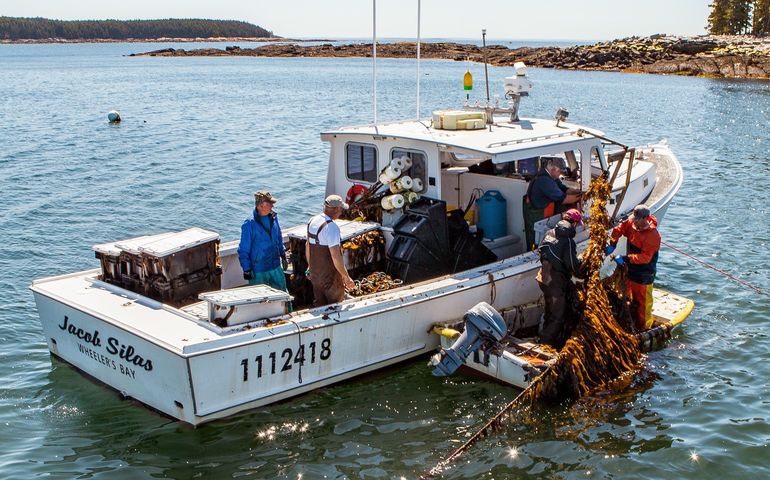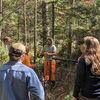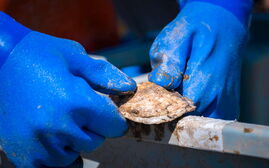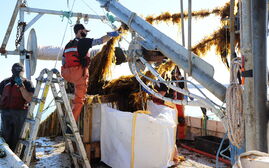Maine’s edible seaweed industry may double production in next five years
 Courtesy / Island Institute
The Island Institute’s Edible Seaweed Market Study concludes that Maine's edible seaweed production will more than double by 2025.
Courtesy / Island Institute
The Island Institute’s Edible Seaweed Market Study concludes that Maine's edible seaweed production will more than double by 2025.
New research indicates that Maine's edible seaweed production will grow an average of 12% to 15% annually over the next decade and is expected to more than double by 2025.
The Island Institute published the report, which describes the growth potential for Maine's edible seaweed market over the next 15 years.
More than 95% of edible seaweed products in the U.S. are currently imported, yet Maine waters provide excellent conditions for growing quality sea vegetables locally, the institute said in a news release.
The Edible Seaweed Market Study provides an analysis of Maine’s edible seaweed market conditions and indicates how investments in the sector could enhance Maine’s coastal economy by diversifying marine livelihoods and providing new supply-chain businesses and jobs.
The study compiles research by business analysts who conducted interviews with edible seaweed harvesters, processors, researchers, retailers, and industry experts in Maine, Alaska, New England, California and the Pacific Northwest. The report is designed to be a critical resource for the Maine seaweed aquaculture industry.
“The state of Maine is fast becoming the leader in domestic seaweed products,” Brianna Warner, CEO of Atlantic Sea Farms and a former Island Institute staffer, said in the release. “A report that can help give us a better roadmap as we build something entirely new is incredibly helpful."
Low costs, varied revenue potential
Growing and harvesting edible seaweed species of sugar kelp and alaria is a relatively low-cost, easily implementable process that provides supplemental income for harvesters and leads to more product innovation.
“A greater understanding of the market at a local, regional and international level enables more strategic investments in sea farming,” Craig Olson, senior community development officer for small business and aquaculture at the Island Institute, said in the release.
The Island Institute assists farmers, processors and distributors through on-the-water training and by providing access to financing through the Tom Glenn Community Impact Fund.
The annual revenue potential for harvesters varies significantly depending on lease acreage and processing practices.
For seaweed harvesters, securing access to processing capabilities before initiating the growing process is critical to success.
“Continued growth in the industry is dependent upon the expansion of processing capacities, more value-added product development, distribution network expansion and building consumer awareness,” said Peter Piconi, who leads the aquaculture program at the institute. “As the emerging U.S. edible seaweed market develops, participants are well-positioned to leverage Maine’s water quality and brand advantages to secure a major role in the U.S. marketplace.”
Still, Maine’s edible seaweed aquaculture industry is in a relative infancy, with a limited set of harvesters and processors investing to build capacity, develop products, establish distribution channels and create consumer demand.
But there’s strong interest among existing and potential new entrants in expanding Maine’s farmed edible seaweed industry. According to the report, it first needs infrastructure improvements, including expanded processing capacity, value-added product development, distribution network expansion and building of consumer awareness.














0 Comments